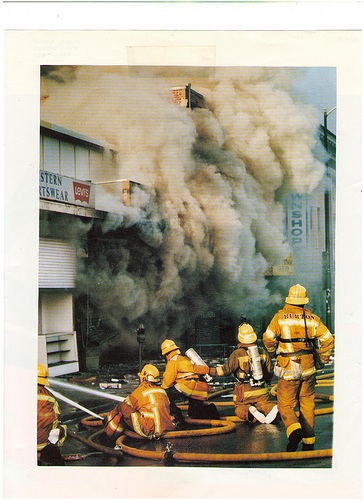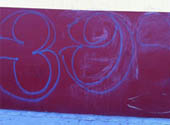Click on the photo to see a slideshow
The entire city was swept up in the events of that week, but for law enforcement, the memories were especially vivid.
“We heard the verdict and almost spontaneously a couple hundred people showed up in front of Parker Center expressing how upset they were,” said Bernard Parks, L.A. City Councilman and former Deputy Chief of Police.
“The early morning and late nights when we were out patrolling streets, it was kind of eerie because we had no idea where folks were, whether there were snipers.”
Police officers weren’t the only ones faced with rioters. Firefighter Ian Burnett was sent from Torrance to Inglewood and South Los Angeles.
“There were lawless groups of crowds that did not want us to put the fires out,” Burnett said. “They were turning the hoses off, cutting the hoses, stealing stuff off the fire engines, and things like that, and that was just the first day.”
 Firefighter Brent Burton was also fighting fires, but he was stationed in Hollywood.
Firefighter Brent Burton was also fighting fires, but he was stationed in Hollywood.
“I went from being on the roof of one building with the hose and my partner squirting water, to being on the roof of another building with some other fire fighters with a chainsaw cutting a hole, to being on the ground with another group of fire fighters and large 2 ½ inch hose line, to being on the top of my engine with our big dead gun squirting water at a commercial building,” Burton said.










 Listen to the audio story from Annenberg Radio News:
Listen to the audio story from Annenberg Radio News: “Wait a second, there was an urban legend that there was a judge that was painting out graffiti,” Totten said.
“Wait a second, there was an urban legend that there was a judge that was painting out graffiti,” Totten said.  The East Los Angeles Library was filled with parents, students, ECC and LAUSD representatives to hear about new attendance goals. The Education Coordinating Council is an organization devoted to improving education. Trish Ploehn, an ECC member, outlined their goals.
The East Los Angeles Library was filled with parents, students, ECC and LAUSD representatives to hear about new attendance goals. The Education Coordinating Council is an organization devoted to improving education. Trish Ploehn, an ECC member, outlined their goals.




